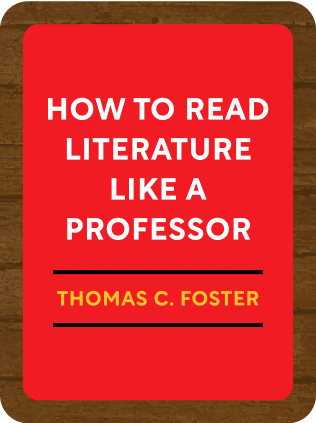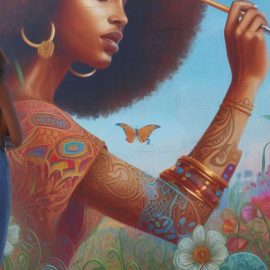

This article is an excerpt from the Shortform book guide to "How to Read Literature Like a Professor" by Thomas C. Foster. Shortform has the world's best summaries and analyses of books you should be reading.
Like this article? Sign up for a free trial here .
Are you looking to expand your knowledge of How to Read Literature Like a Professor? Do you want practice questions to help you study?
How to Read Literature Like a Professor by Thomas C. Foster is a crash course in the art of reading intelligently. Here are four exercises to help you analyze literature as a professor would.
Continue below for How to Read Literature Like a Professor exercises.
How To Read Literature Like a Professor: Book Exercises
Do you want to learn to get more out of the novels you read? Are you interested in learning how authors communicate through literary devices like symbols, archetypes, and allusions?
How to Read Literature Like a Professor by Thomas C. Foster is a crash course in the art of reading intelligently. In this book, you’ll learn how to identify common literary conventions and gain the skills necessary to analyze them like a professor would.
Below are exercises to help you read like a professor:
Exercise: Draw on Your Literary Memory
When you read a novel or watch a film, you want to keep your eyes open for any references to or adaptations of the sacred texts. Practice looking for intertextual references of Shakespeare’s classics.
In the musical film West Side Story, two New York City street gangs are in conflict. The Jets are led by Riff after Tony leaves the gang, and The Sharks are led by Bernardo. One night, Tony and Bernardo’s sister, Maria, meet at a dance and fall in love. Both The Sharks and The Jets are furious, and the conflict reaches a boiling point. Just before Tony and Maria are able to run away together, Tony is shot and killed. Maria holds him in her arms as he dies. The tragedy of Tony’s death is enough to end the conflict between the rival gangs.
- This is a musical adaptation of one of Shakespeare’s classic plays. Write down which one you think it might be.
- If you thought of Romeo and Juliet, you were right! Now that you know it’s the story of Romeo and Juliet translated into 1950’s New York, think about the similarities and differences in the plotline. Write your thoughts below.
- Think of one of your favorite books or movies. Can you find thematic or narrative allusions to any sacred texts within the story? What are the similarities and differences?
- How does that allusion deepen the meaning of your favorite book or movie? What might the similarities and differences between your favorite work and the sacred text illuminate?
Exercise: Recognize and Interpret Symbols
Geography influences a novel’s atmosphere, characters, and plot. Practice using the analytical skills you’ve learned in this chapter to analyze geographical symbols.
- In Mark Twain’s The Adventures of Huckleberry Finn, a young boy, Huck, and an escaped slave, Jim, travel down the Mississippi River on a raft.
- In what ways is traveling into the Deep South thematically relevant for Huck and, especially, Jim?
- Consider the raft that Huck and Jim are traveling on for the majority of the novel. What could it symbolize?
Exercise: Identify the Quest Archetype
Every quest narrative includes a quester, a place to go, a stated reason to go there, challenges along the way, and a real mission that reveals itself in time. Practice identifying these elements in a story.
- One day, a young boy named Kip agrees to go to the grocery store to buy a loaf of bread for his mom. He chooses to ride his old, one-speed bicycle, of which he is deeply ashamed. When he gets to the store, he is humiliated to see the girl he loves, Karen, in the parking lot. She’s hanging out with a guy named Tony, who has an expensive sports car. Moments later, in the bread aisle, Tony decides to enlist for the military. He has learned his lesson: that he’ll never get what he wants in this town, where people only care about how much money your family has.
- In the box below, identify the following elements in this quest narrative: The quester, the place to go, the reason to go there, the obstacles faced, and the self-knowledge acquired:
Your Turn to Read Like a Professor
On your own time, read the story “The Garden Party” by Katherine Mansfield.
You can find the story online for free here.
When you’ve finished the story, answer the questions below. Read carefully and practice all of the strategies for interpretation that you’ve learned from this book. Write or type your answers to stay accountable, and don’t look at any other sources for help.
- What does the story signify? That is, what do you interpret as the story’s meaning?
- Why do you think that? What elements of the story gave you that interpretation?
Once you’ve answered the questions for yourself, compare your own answers with some of these other interpretations:
- The story is about the indifference of the family in the story to the working class living down the hill.
- The story is about the young girl’s guilt over having a party while others mourn, and the indifference of the upper class to the struggle of others.
- The story uses the metaphor of birds and flight as a means of showing the family as insulated from the lower class. One character is described as a butterfly and the party guests are described as birds. The family home is similar to an aerie up high on the hill. Throughout the story, the main character is trying her wings and gaining some independence, but ultimately chooses to stay in her lofty moral high ground.
If your responses were anything like these interpretations, you should give yourself a good grade. Here is another, more in-depth interpretation of the story:
When Laura goes down the hill to visit the house of the dead man, she has actually gone into Hades. Laura is a representation of the mythical character Persephone.
That makes Mrs. Sheridan, Laura’s mother, a representation of Demeter, the goddess of agriculture and fertility. The proof? Throughout the story, Mrs. Sheridan has a fascination with flowers and her children.
Laura’s adventure down the hill mirrors Persephone’s trip to Hades in many ways:
- When Laura crosses the broad road at the bottom of the hill, it is reminiscent of crossing the River Styx into Hades.
- Hades has a three-headed dog at the gate, and Laura meets a dog at the gate in front of the dead man’s house.
- The Golden Bough, which is the admission ticket into Hades in the myth, is replaced by the gold daisies on Laura’s hat.
- In the myth, Persephone comes across a woman named Sibyl, who has a cave full of written oracles. In Mansfield’s story, Laura meets an old woman who has newspapers at her feet.
- Laura’s brother, Laurie, is a representation of Hermes from the myth. In the myth, Hermes escorts Persephone out of Hades in a chariot. In this story, Laurie comes to pick up Laura from the dead man’s house.
- Theme: The myth of Persephone is about a young woman acquiring knowledge of death. The same could certainly be said about “The Garden Party.”
If you didn’t make any of these associations in your reading of the story, that’s okay. If you understood the story in terms of what actually transpired in the plot, you have still gotten something out of it. You managed to come to your own conclusions, and that is the first step of reading intelligently.

———End of Preview———
Like what you just read? Read the rest of the world's best book summary and analysis of Thomas C. Foster's "How to Read Literature Like a Professor" at Shortform .
Here's what you'll find in our full How to Read Literature Like a Professor summary :
- How to get more out of the novels that you read
- Why you should focus on memory, symbols, and patterns to understand literature better
- Why sex scenes aren't always about sex






